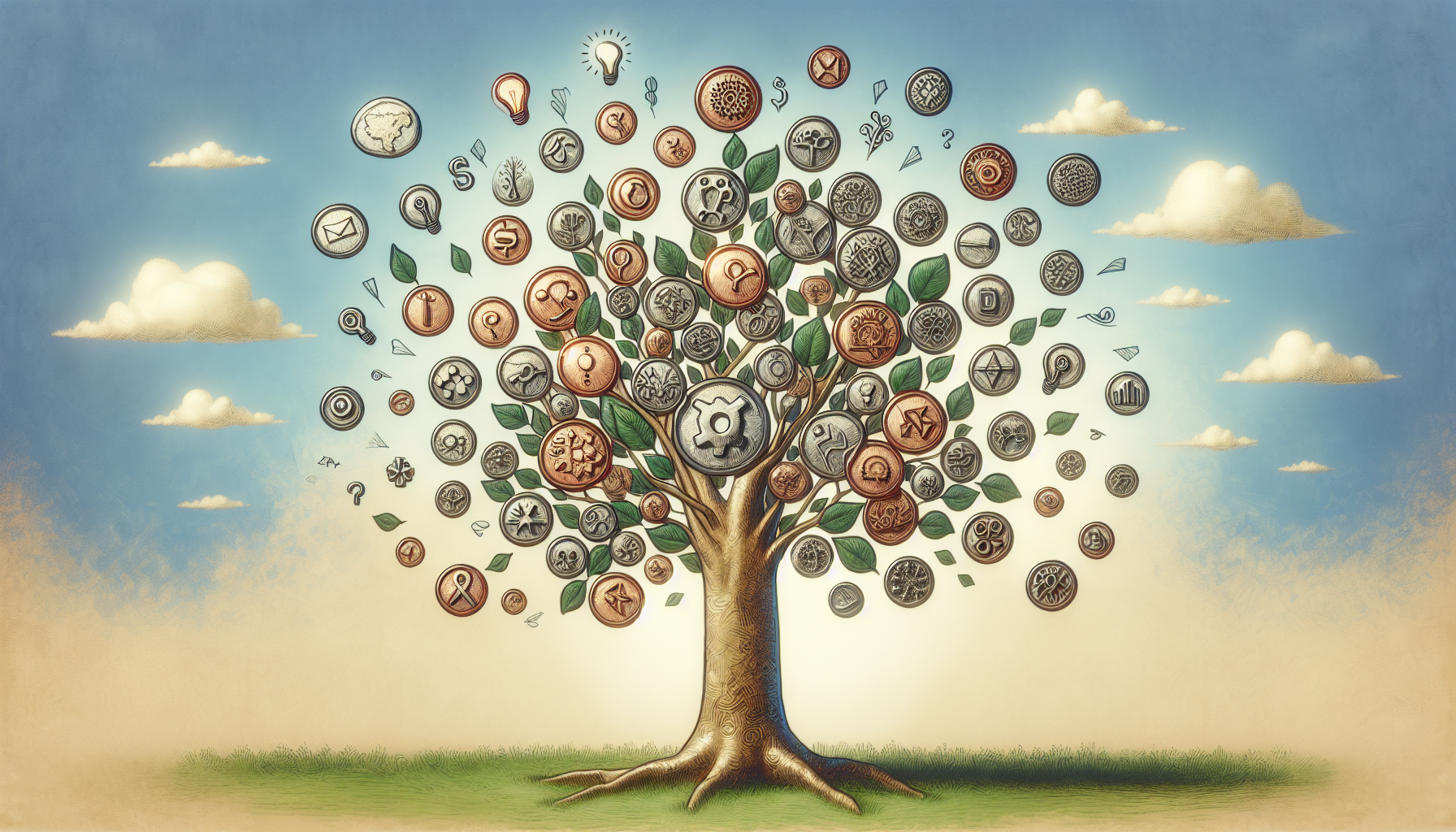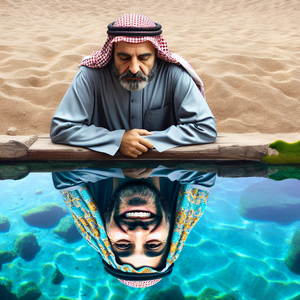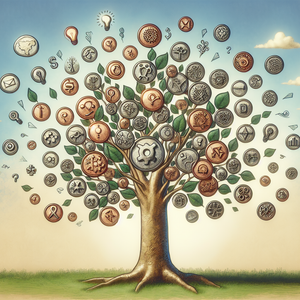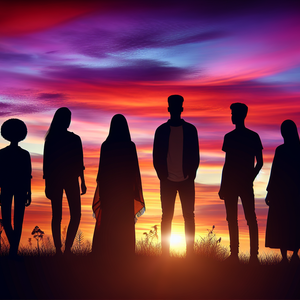The Art of Emotion: How Anime Captures the Human Experience

One of the most distinctive features of anime is its unique visual storytelling techniques. The use of color, composition, and movement can convey emotions in ways that words sometimes cannot. For instance, the anime Your Name (Kimi no Na wa) utilizes breathtaking visuals to reflect the characters’ emotional states. The vibrant colors of the landscapes often mirror the characters’ feelings—blues and greens for longing, warm hues for happiness. This visual language enhances the narrative, allowing viewers to feel the characters' journeys on a visceral level. Another example is A Silent Voice (Koe no Katachi), which employs a minimalist art style during moments of introspection and emotional turmoil. The sparse backgrounds and muted colors effectively highlight the characters' internal struggles, drawing viewers into their emotional world. This ability to visually convey complex emotions is a hallmark of anime, setting it apart from other storytelling mediums. The use of exaggerated facial expressions and dynamic action sequences also allows for a swift emotional transition, capturing the essence of joy, sorrow, anger, or fear in an instant.
Character Development and Emotional Depth
Anime excels in character development, often allowing viewers to form deep connections with its characters. Series like Attack on Titan and Fullmetal Alchemist: Brotherhood feature protagonists who evolve through personal struggles, moral dilemmas, and relationships. These narratives explore the human condition, addressing themes of loss, sacrifice, and redemption. In Attack on Titan, for instance, viewers witness the transformation of Eren Yeager from a naive boy to a conflicted leader grappling with the consequences of his choices. This journey resonates with audiences, as it reflects real-life challenges and the complexity of human emotions. Similarly, Fullmetal Alchemist: Brotherhood presents the Elric brothers’ quest for redemption after their tragic mistake, inviting viewers to explore themes of guilt and the value of human life. The relatability of such characters fosters empathy and engagement, making their stories feel authentic. Moreover, series like My Hero Academia highlight the struggles of young individuals trying to find their place in a world that often feels overwhelming. Through the characters’ growth and their relationships with mentors and friends, viewers are encouraged to reflect on their own aspirations and fears, further deepening the emotional impact.
The Role of Music in Evoking Emotion
An often-underappreciated aspect of anime is its soundtracks, which play a crucial role in enhancing the emotional experience. Composers like Yoko Kanno and Hiroyuki Sawano have crafted memorable scores that elevate the narrative and amplify viewers' emotional responses. For example, the haunting melody of Cowboy Bebop captures the essence of nostalgia and longing, perfectly complementing the series' themes of existentialism. In Your Lie in April, the use of classical music not only serves as a narrative device but also reflects the characters’ emotional journeys. The protagonist, Kōsei Arima, experiences a profound transformation through music, which symbolizes his struggle to overcome trauma and embrace life. Such musical elements can turn a simple scene into a powerful emotional experience, leaving a lasting impact on the audience. The synergy between visuals and music in anime creates moments that linger long after the credits roll, making viewers reflect on their own lives.
Comparisons Across Genres
While the emotional depth of anime can be found in various genres, certain series stand out for their poignant storytelling. For instance, slice-of-life anime like Clannad and March Comes in Like a Lion focus on everyday experiences and relationships, exploring themes of family, friendship, and personal growth. These narratives resonate with viewers through relatable situations and heartfelt moments, showcasing the beauty of ordinary life. On the other hand, darker genres such as horror and psychological thriller also explore deep emotional themes. Paranoia Agent and Death Note tackle issues of morality, identity, and the consequences of one’s actions, prompting viewers to reflect on their values and choices. Through these varied genres, anime showcases its versatility in addressing the human experience, appealing to a wide range of audiences. The juxtaposition of light-hearted moments against darker themes often amplifies the emotional stakes, creating a more complex narrative landscape.
Anime is more than just entertainment; it is an art form that captures the intricacies of the human experience through visual storytelling, character development, and music. By evoking deep emotions and tackling complex themes, anime resonates with audiences worldwide, fostering connections that transcend cultural boundaries. As we continue to explore the rich tapestry of anime, we uncover its potential to reflect our own lives, struggles, and triumphs, making it a powerful medium for storytelling in the modern age. Whether through vibrant visuals, compelling characters, or unforgettable music, anime remains a poignant reminder of our shared humanity, inviting us to reflect on our own experiences through its captivating lens.
Character Designer
Studio Ghibli, Toei Animation, MAPPA
Core Responsibilities
Develop unique character designs that reflect the personality and emotional depth of characters in various anime projects.
Collaborate closely with writers and directors to ensure character designs align with the story and overall aesthetic.
Create character turnaround sheets, expressions, and poses to guide animators.
Required Skills
Strong illustration skills, with proficiency in traditional and digital art techniques.
Understanding of anatomy, color theory, and visual storytelling.
Experience with design software such as Adobe Photoshop and Illustrator.
Anime Scriptwriter
A-1 Pictures, Kyoto Animation, Sunrise
Core Responsibilities
Write engaging scripts that capture the emotional nuances of characters and storylines in anime.
Collaborate with directors and producers to align the script with the overall vision of the anime series or film.
Adapt existing source material (like manga or novels) into a script format while maintaining the essence of the original work.
Required Skills
Exceptional writing and storytelling skills, with a deep understanding of narrative structure.
Familiarity with anime tropes and genre conventions.
Ability to convey complex emotions through dialogue and scene direction.
Sound Designer for Anime
Core Responsibilities
Create and edit sound effects that enhance the emotional impact of scenes in anime productions.
Collaborate with composers to integrate music and sound seamlessly into the overall audio landscape of the anime.
Ensure that sound design supports character development and storytelling, elevating the viewer's experience.
Required Skills
Proficiency in audio editing software such as Pro Tools or Adobe Audition.
Strong understanding of audio principles and their emotional implications in storytelling.
Experience in creating soundscapes that resonate with diverse genres, from slice-of-life to psychological horror.
Anime Director
Madhouse, Wit Studio, Bones
Core Responsibilities
Oversee the creative vision and direction of anime projects, guiding all aspects from storyboarding to animation.
Collaborate with writers, animators, and sound designers to ensure a cohesive narrative and visual style.
Make crucial decisions regarding pacing, character development, and emotional arcs throughout the production process.
Required Skills
Strong leadership and communication skills, with experience in managing creative teams.
Comprehensive knowledge of animation techniques and storytelling methods, particularly in anime.
A portfolio showcasing previous work and a strong understanding of the anime medium.
Anime Marketing Specialist
Crunchyroll, Funimation, Netflix
Core Responsibilities
Develop and execute marketing strategies for anime releases, focusing on engaging target audiences through various channels.
Create promotional content, including trailers, social media campaigns, and merchandise tie-ins that resonate with fans.
Analyze audience engagement and market trends to refine marketing tactics and increase visibility for anime productions.
Required Skills
Strong understanding of digital marketing principles and platforms, particularly within the entertainment industry.
Excellent communication skills, with a flair for creative storytelling in marketing contexts.
Knowledge of anime culture and trends to effectively connect with audiences.


